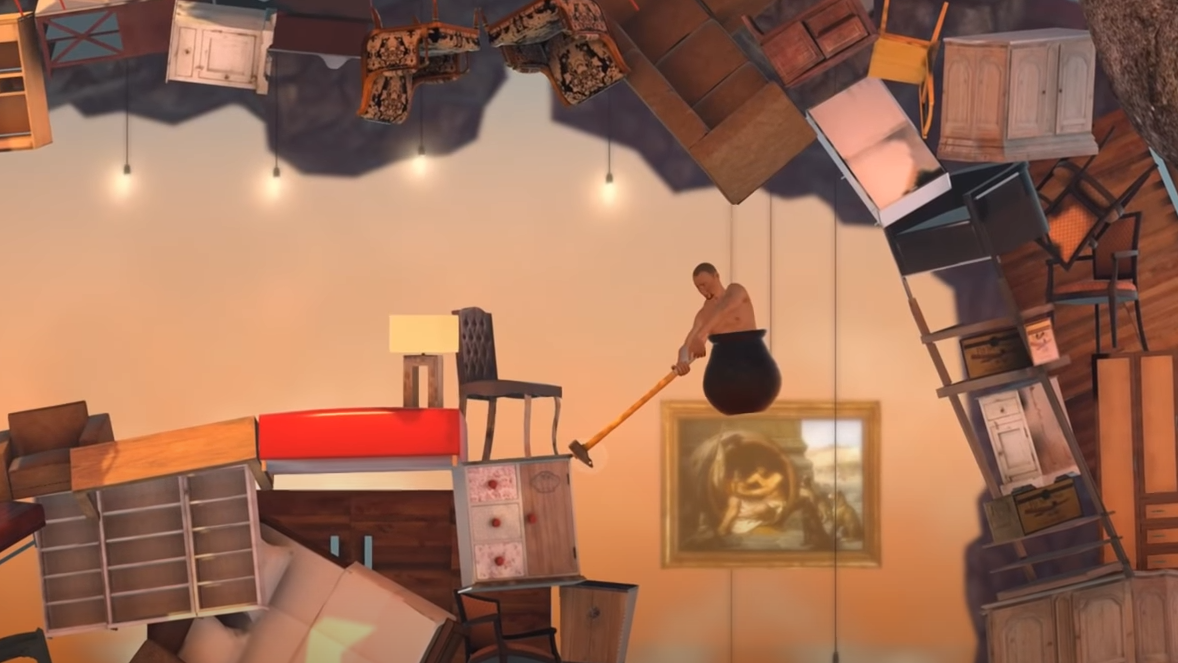Walking simulator is a genre of games that gets its name from derogation. Starting from the 2012 game Dear Esther, a meditative game where players walk on an island in the Hebrides of Scotland and listen to a man reading letters to his dead wife, games under this category often share an unwritten set of rules and characteristics. They are all made by independent developers or studios, employing minimalistic gameplay and emphasizing storytelling experience, having no failure state, and featuring an invisible narrator voicing over the game. The term walking simulator was initially a ridiculed word used to criticize its lack of player agency, a result of low budget, and lack of gameplay depth, which is a choice made to privilege narrative. While early games of the genre struggled to solve such dilemmas, titles launched in the latter half of the decade began to find their sweet spot on the spectrum. The 2016 walking simulator Firewatch perfectly balances its narrative and gameplay employing anticipatory play, and manages to preserve a false sense of a certain amount of player agency in a linear story by cleverly disguising its inconsequentiality.
Firewatch, by Campo Santo, is an adventure game taking place in the Shoshone National Park of Wyoming in 1989. The player follows Henry, a middle aged man taking a temporary escape from the misfortunes in his life by taking the job as a fire lookout in the Two Forks Woods. Unlike other walking simulators, Firewatch has more than one voice: Henry and his supervisor Delilah. And the entirety of Firewatch’s narrative happens inside the dialogues between these two characters on the walkie-talkie Henry carries around with him in the wood, while the core gameplay is basically travelling to the locations discussed over the dialogues with the assistance of a map and a compass.
Fire Watch. Campo Santo, 2016.
As the designer of the game Nels Anderson calls it, Firewatch is a narrative exploration game, a more precise definition than walking simulator, for being heavy on storytelling experience, with its gameplay reduced down to mostly exploration. Playing as a fire lookout, one might expect to be able to spot fire or triangulate locations on the map. Yet the designers decided that there should be “nothing more than what the game’s themes demand.” There has long been such tension between narrative and gameplay in not just walking simulators but all games. Game designer and theorist Brian Upton has addressed it in his book The Aesthetic of Play: “If a player approaches a game primarily as an opportunity to work toward victory, he is never going to be very interested in its story, no matter how compelling it is” (Upton 274). And it is the same other way around; an overemphasis on the story could limit the gameplay depth.
Yet, the exploration of Firewatch does not feel limited at all; instead, it feels natural using Upton's solutions, anticipatory and closure-oriented play. “If we want to encourage players to engage with our story, it helps to create situations in which their actions are interesting in and of themselves, not merely as stepping stones to victory. When we give players opportunities to explore, observe, and experiment with a minimum of challenge, we open the door to closure-oriented play” (Upton 275). For Henry, there is no such thing as victory or defeat; he is just scouting the forest and getting lost once in a while. With the traditional sense of winning and failing removed from the game, the game's focus shifts from making physical inputs towards victory to a mental calculation that navigates through the state space, looking for the desired outcome, as the players internalize the narratives and transform them into internal rules. When players are immersed in this character, they begin to interpret and anticipate the story, and therefore the narrative becomes a part of the play.
This is anticipatory play: We anticipate the beauty of the Two Forks Woods while climbing up the watchtower; we anticipate a forest fire seeing a plume of smoke in the distant wood; we anticipate to be spied on after finding a note filled with dialogues between Henry and Delilah. These contemplation, planning and conceptualization are part of the game played outside of the computer system in our head, making the narrative and play overlap and intertwine through the magic of anticipatory play. Ultimately fiction becomes play, and as the external rules internalize, the player enters the half-real zone. As described by Jesper Juul, “the player navigates these two levels, playing video games in the half-real zone between the fiction and the rules” (Juul 202). It is the realm where narrative and game are no longer opposite ends on the spectrum. The line between them gets blurred, and players no longer follow the external real rules set by the system, but self-imposed internalized rules that are coherent with the fictional world.
Firewatch is a tale unlike any other. The story being told is one about Henry, not the players. But players still engage with the narrative, role-playing as if they are actually involved. This sense of embodiment is realized through a series of manipulation on player agency. “Agency is the satisfying power to take meaningful action and see the result of our decisions and choices,” as Janet Murray defined in her book Hamlet on the Holodeck (126). The inconsequential choices in Firewatch obviously do not meet such definition, limiting the impact players are allowed to make to the story. In the end of the day, there is only Henry walking his predetermined path while players are just audiences tricked into thinking their decisions will matter. Through the walkie talkie, the players choose the dialogue options, and Delilah will respond accordingly though it does not affect the story or the ending. But the illusion of choice allows players to engage in narrative play, anticipating a result and be able to participate like the story is their own. Inevitably, players will be disappointed when they reach the end of the four-hour journey and realize the story's linearity. However, Firewatch seamlessly incorporates it into its tragic theme, that one can not rewrite one’s destiny. Murray, in Hamlet on the Holodeck, discusses three ways in which tragedy can be addressed in electronic narrative. Firewatch, through eliminating consequential choices, adopts the method of simulation of destiny. “The tragedy of the situation would arise from a demonstration of the ways in which people unwittingly play into destructive patterns, sometimes from the best of intentions” (Murray 179). No matter how hard players try to choose and change Henry’s path, there is only one way the story could possibly end.
We can, in fact, see this intention to employ inconsequential choice and apply it to deepen the theme right from the beginning of the game, which is an interactive novel, originally made in twine as a prototype to experiment with the storytelling devices. This interactive novel tells the backstory of Henry before taking the job, along with several choices to make that have zero impact on where the story leads. Henry and Julia will inevitably fall in love and get married, and no choice can prevent Julia from falling ill. This mini-novel is basically what the entire game is.
Through anticipatory play, the 2016 walking simulator Firewatch finds balance between narrative and play, and strikes players with a tragic theme of the inevitability of fate with the inconsequentiality of player agency. As the 2010s come to an end, the tag walking simulator is no longer an insult. It has been embraced by a stabilized portion of players and adopted by larger studios like Kojima Production. Now when we talk about walking simulators, we are not merely expecting the walking, but the journeys the walking will take us on.
Works Cited
Brian Upton, Aesthetics of Play
Jester Juul, Half-Real
Janet Murray, Hamlet on the Holodeck
Nels Anderson - Firewatch, Design Constraints in Narrative Exploration Games
Firewatch: Narrative Design is Game Design, Chris Remo & Arthur Protasio

